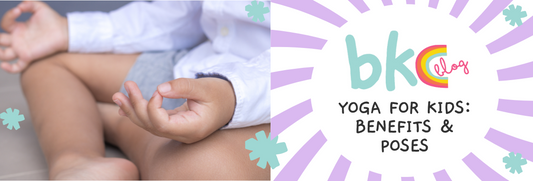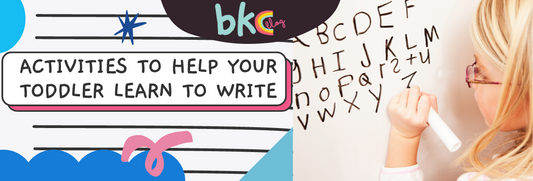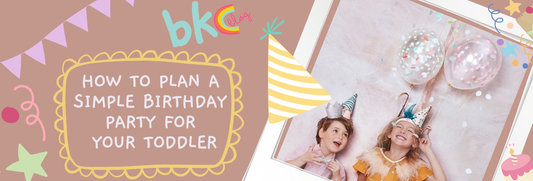Do you miss eating out but dread the idea at the same time because you have a young child? While it may seem like a task, it is definitely possible for you to enjoy a nice family dinner even with a toddler. We have put together some useful tips to help you plan eating out at a restaurant with your young child.

If you haven’t been living under a social media rock, you have probably come across content that makes parenting look easy: parents heading out to a fancy restaurant in fine clothes with a toddler in tow, young children game for new kinds of food, parents enjoying their vacations with their young tots, and whatnot.
However, on the other side of the lens, reality is not so dreamy. Let’s face it: dining out with a young child is an anxiety-inducing affair for all parents. But it need not be all tears and running home mid-dinner.
In this article, we take a look at why kids get anxious at restaurants or public settings, and share some tips on how to make dining with young kids less painful.
Why Do Kids Get Cranky in Public ?
According to experts, children show extreme, unpleasant, and sometimes aggressive behaviours for a very short period of time, as a response to frustration or anger. It is a part of their brain’s development process.
Parents, this too shall pass; tantrums commonly occur in two- and three-year-olds and gradually disappear by age five. Cue sigh of relief.

So why does it always happen in the most inconvenient places? Toddlers love to be independent, and thereby, be in control of their surroundings. For instance, if a young child is allowed to run around in a restaurant, they might end up bumping into waiters carrying hot plates, diners who are caught unawares, and the sharp edges of furniture in the process.
Like any other human being, kids also feel frustrated when there is a power struggle (in this case, with the parents). Except, kids’ brains aren’t fully developed to cope with the overwhelming barrage of emotions that leads to a tantrum.
Still, not all kids throw tantrums when they are in a public place.
But most struggle to adjust to social situations. It might be because your child is anxious about meeting or seeing new people, scared of being in an unknown setting outside their comfort zone, fearful of what strangers might think of them, or worried if they might embarrass themselves. This might hinder them from having a good time.
Therefore, you have two goals to achieve when you are out with your young child/children:
-
Try to prevent tantrums as much as possible. If they do happen, understand why they are behaving that way.
-
Make sure your child is comfortable and ensure they are enjoying whatever activity you have planned.

How to Plan Your Outing to the Restaurant
-
Choose a child-friendly restaurant. Check if the place is brightly lit, quiet enough for a coherent conversation, has a kids’ menu (with healthy foods), and has high chairs available. Loud music and a dark ambience might stimulate your child excessively.
-
If it’s your first time dining out with your child, try not to choose a fine dining restaurant even if it’s child-friendly. Go for an informal setting.
-
Get your child excited. If it’s their first time, it is only natural for them to feel anxious. But kids are also curious, so talk to them about this new concept. That way, you can gauge your child’s feelings and comfort them accordingly.
-
Practise beforehand with your child on what is expected when eating out. This includes: being respectful of other diners, staying put at the table during the course of the meal, and using cutlery.

-
Call ahead and reserve a table, preferably one with sofa seating. You don’t want to wait for guests to leave to finally settle in with your child. Standing around in queues will only tire them out and make them cranky.
What to Do Before You Leave for the Restaurant
-
Make sure your child is well-rested and not hungry. Believe it or not, taking a child who is tired, hungry, or both is a recipe for a disastrous dining out experience.
-
Most restaurants now have their menu available online. Make it a point to go through it and choose what everyone wants before you reach the table.
-
Select items that you know will be easy for your child to eat. If your child makes a mess at home eating rotis with curry, avoid them. Shortlist three or four options, and ask your child to choose one or two of them. Having autonomy over their meal might give them a push to actually eat their choice of food.
-
Carry child-friendly cutlery with you; your child will feel comfortable and confident eating their food.
-
If you think your child might not enjoy the food, carry some food, such as fruits cut up in small pieces, as backup. Child-friendly restaurants usually allow this.
How to Help Your Child Eat at the Table
-
Once you reach the restaurant, select a table with sofa seating. That way, young children can comfortably move around and stretch their legs, and you can even lay them down on it when they fall asleep.
-
For young children, bring a stroller to tuck them in when they fall asleep.
-
Since you would have already scouted out the menu, you will be able to place your order quickly.
-
While placing your order, double check with the waiter on the quantities and spice levels of items you are planning to order for your child.
-
Make sure to order appetisers for the children if the main course will take time to reach the table. You can order something simple like fries which are usually readily available at restaurants.
-
While you’re waiting for food to be served, keep your child entertained with colouring or other activity books. As a last resort, you can carry their favourite cartoons on a tablet. Don’t forget to carry headphones! Or better yet, if the place has interesting details in its decor, you can point them out and play games, like find something in a colour of your choice.
-
Don’t place your child in the high chair as soon as you reach your table. Only do this when the food is on the table. As mentioned before, children and confined spaces don't go well together.
-
If your child is getting restless, patiently take them out of their high chair and out of the restaurant for a change of scenery. Bring them back once they are settled.
How to Manage Your Child’s Tantrums
-
Tantrums are inevitable, so be mentally prepared.
-
Carry one or two of their favourite toys, either something that entertains them or something that comforts them. Let them play with them in rotation.
-
Stay calm if your child throws a tantrum. If they see you get hassled or angry, it will only feed into their anxieties. This would be a great time to take them out for that walk outside the restaurant that we mentioned.
-
Make sure you ask for the bill when it looks like everyone is nearing the end of their respective meals. This will allow you to make a quick exit if your child starts to get restless and anxious.

It is okay to take the easy way with certain things for your sanity in difficult surroundings. Since it’s an unfamiliar area, your child might already be feeling anxious. Always expect the unexpected with kids, and that will keep you prepared for anything!
Parents of young children are often compelled to put their lives on hold for a few years. Simple joys like eating out or going out to the cinema feel like monumental tasks. But we want to assure you that you can reclaim parts of the life you had before – with some significant changes to accommodate the youngest member of your family.





